Let me preface this post with the simple fact that I am a dog enthusiast. It was my great joy to have owned a couple of dogs. One was a rescue and the other a Standard Poodle. I have done portraits of people and horses together and cats both domestic and pumas. I even enjoy painting fish. This is post is about a portrait of a special and rarer breed of hunting dog.
“The Pudelpointer is a versatile hunting dog breed from Germany. In 1881, a German breeder, Baron von Zedlitz, worked on producing his ideal tracking, pointing, and retrieving gun dog, suitable for work on both land and water. The Baron crossed seven poodles with various English pointers. [1][2]” Retrieved from Wikipedia 03-13-2020
Baron von Zedlitz wanted a dog for hunting that loved the water (Poodle) with the drive and nose of a pointer. His goal was to have a dog that was good in the water and on land while hunting. A Pudelpointer can both point game and then retrieve the felled bird from water or land.
Pudel is German for Poodle. The Standard Poodle is a hunting dog that is used for waterfowl hunting. The English Pointer is used to flush birds in the field.
The Pudelpointer breed was introduced to North America in 1956 by Bodo Winterhelt who remained involved in maintaining the breed standard until his death in 2018. He founded Winterhelle Kennel where he created the foundation of the breed in North America. In 1977 Winterhelt founded the Pudelpointer Club of North America in Canada.
The Pudelpointer is not a well known breed. The breed was not registered with the American Kennel Club because the qualities of a hunting breed are more important than the conformation standards that The AKC would impose. In addition, reading about the Pudelpointer more extensively since this post lead me to discover this breed is carefully bred and managed. Breeders require that an owner be a regular dedicated hunter. The Pudelpointer is a highly active dog that needs exercise and is tireless in the field.
This portion of an article by Duncan Barnes give a good description of the Pudelpointer in action.
Not poodle, not pointer, but both dogs in one
“The gamekeeper of Nicholson Island, a private shooting preserve off the Canadian shore of Lake Ontario, was demonstrating the versatile talents of a nondescript-looking hunting dog named Komet von der Winterhelle. Staying always within gun range, Komet quartered easily through a millet field for several minutes. Suddenly he broke stride, made a sharp turn upwind and stopped short in a rigid, stylish point. As his master came up from behind, a cock pheasant burst from the grainfield and banked downwind with a frightened cackle. With Komet still on point, the gamekeeper fired and the pheasant fell heavily into the dense briar bordering the field. Komet’s master said a few words of praise, then told him to fetch. Shifting instantly from the role of pointer to that of retriever, Komet plunged into the brambles and brought the dead bird back to the man who had produced such artistry by mixing and blending canine ancestry and instincts as carefully as a chemist formulating a new, high-potency rocket fuel.” Retrieved From “Sports Illustrated” Vault: November 18, 1963
The senior dog Sataya belongs to Patty and Ed of Spokane Washington.
Here is the progression of the Sataya’s portrait so far. Many layers of pastel pencil on BFK Reeves 100% rag paper are drawn to create the many strands of hair on this fascinating and remarkable breed of hunting dog. My goal is to bring together much of Sataya’s original coat colors from older photos to her present day photo.
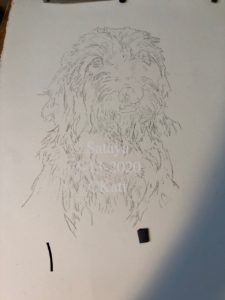
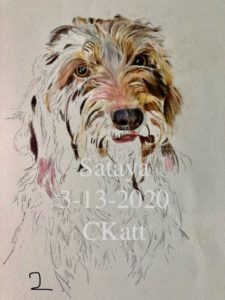
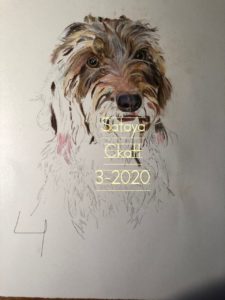
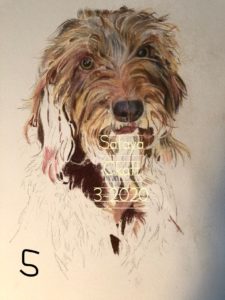
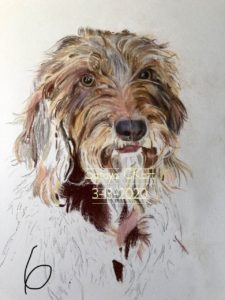
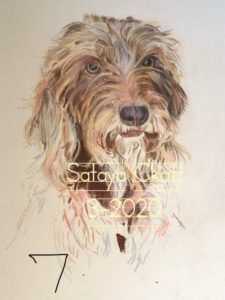
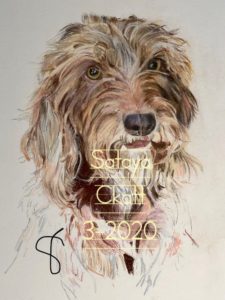
Portrait Progress of Sataya A Pudlepointer.
A Pudlepointer description:
About 24 inches high and weighing no more than 60 pounds. The pudelpointer has a tough, wirehair coat that is soft to the touch, a cropped tail, dark-brown eyes, silky ears that are part pointer and part hound, and a comical growth of whiskers that looks like a mustache which is called a beard.~Retrieved and modified from “Sports Illustrated” Vault: November 18, 1963
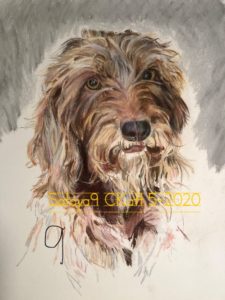
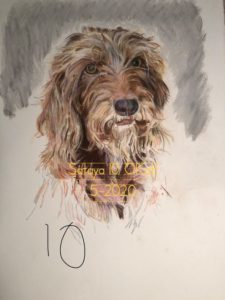
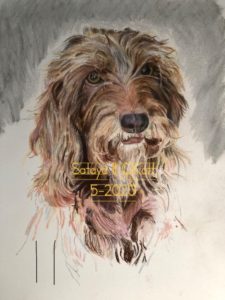
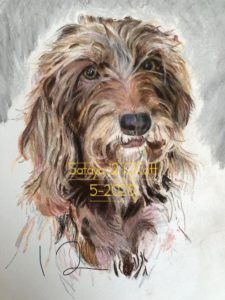
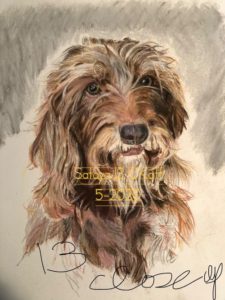
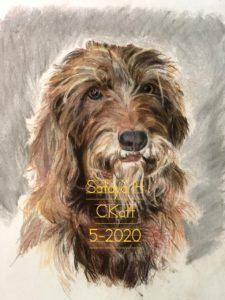
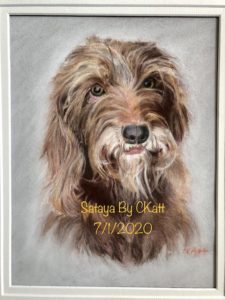
There were many other stages of the drawing as time went on. Sataya’s owner is very pleased with the portrait of Sataya the Pointerpudel.
